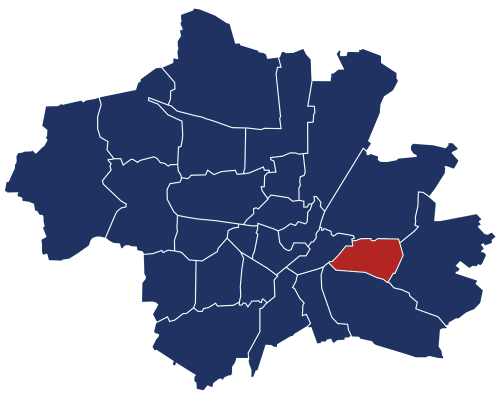Berg am Laim
Historical background of Berg am Laim
Berg am Laim was first mentioned in official records in the year 812. The name “Laim” is translated as “clay” and refers to the region’s geological feature, a loess-clay tongue. In the Middle Ages, the district played an important role, as bricks from Berg am Laim were used for significant buildings such as the Frauenkirche and parts of Munich’s city center. In 1818, the village was designated an independent municipality, which was incorporated into the city of Munich in 1913.
Location
The district of Berg am Laim is located in the eastern part of Munich and borders Ramersdorf to the south, Haidhausen to the west, Bogenhausen to the north, and Trudering to the east. Zamdorf and Steinhausen were formerly part of the municipality of Berg am Laim and were later incorporated into the district of Bogenhausen. The neighborhood is well connected to the public transport network, with subway (U-Bahn), suburban trains (S-Bahn), and several bus lines ensuring excellent accessibility. A tram line also runs directly to Berg am Laim.
Building structure
In the past, the district was shaped by railway construction after the railway line was extended in 1871. At the beginning of the 20th century, the first apartment buildings for railway workers were built. In the 1920s, the first large-scale social housing developments were constructed. After World War II, social housing was primarily built in the western part of the district, while the eastern part saw the development of mainly single-family home areas. Today, Berg am Laim is characterized by a mix of modern office buildings and residential developments.
Population
With around 42,310 residents, the district is one of the smaller boroughs of Munich. The neighborhood has a high proportion of foreign residents, at about 28.2%. The growing popularity of new residential developments has made Berg am Laim a more attractive place to live, with single-family and two-family homes being particularly characteristic of the household structure.
Age Structure
The age structure shows a nearly constant increase in the age groups under 6 years, 6 to under 15 years, 45 to under 65 years, and 65 years and older. The largest share of the population is made up of the 15 to 45 age group, accounting for 44.5%.

Age structure in Berg am Laim
Numbers and Facts
- Area: 638.53 hectares
- Population: 42,310
- Population density: 67 per hectare




